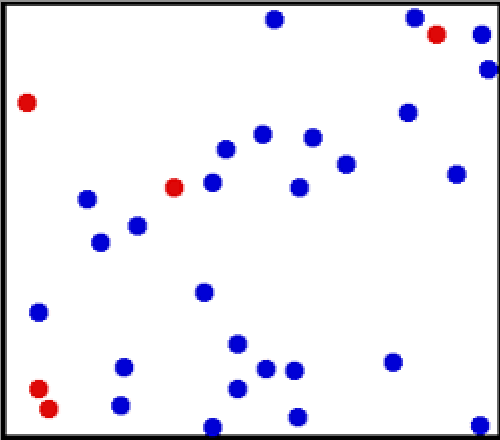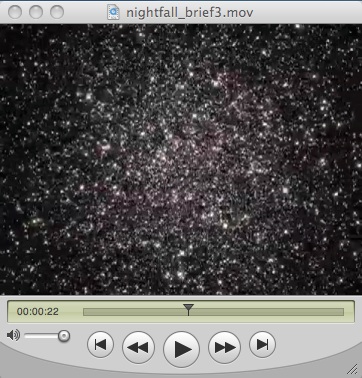
Click to see animation.

Click to see animation (24 Mb .mov file).
(Right) Movie of an N-body calculation of a globular cluster by John Dubinsky. The stars are small compared to their separation so they neither collide nor suffer large angle deflections -- follow a single star and notice its trajectory is smooth, and defined by the gravitational field of all the other stars. As with a gas, the system obeys conservation of stars and total energy, and can be described by a 6-D distribution function in space and velocity. Also, concepts such velocity dispersion (temperature) can be defined at each location. (Note, in this movie the camera is made to rotate, which confuses our ability to judge the actual rotation of the cluster).